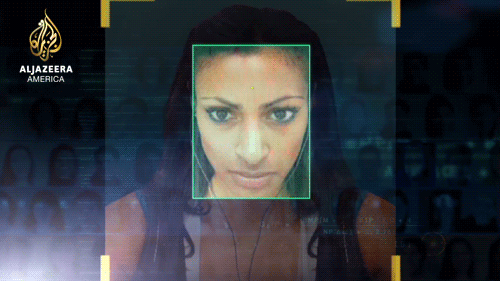On this week’s “TechKnow,” contributor Shini Somara explores facial recognition technology and visits Animetrics, a developer of next-generation facial recognition software. By converting 2-D images into 3-D models, the company’s algorithm avoids some of facial recognition’s more traditional limitations (bad lighting, poor camera angles) and allows it to create better facial biometrics for everything from law enforcement to video games.
Here’s a look at how facial recognition is already being used around the world — and potential future applications for the technology:
MILITARY
One of the first uses of facial recognition technology was by the U.S. military in Iraq in the early 2000s. Biometrics systems were used to identify insurgents and deny “freedom of movement” to the opposition.
COURTHOUSES
Facial recognition technology is also being used to increase security at courthouses, a common target for disgruntled citizens. By inputting photographs of potential threats into a surveillance system, law enforcement can be quickly notified if cameras detect one of those people in or around the courthouse.
AIRPORTS
At Sochi’s international airport, facial recognition technology was used to ramp up security for the 2014 Winter Olympics. Developed by Russian engineers in the Silicon Valley, Artech Group’s 3-D camera technology was used to screen employees and officials in secure airport areas in the hopes of thwarting terrorist activity.
FACE UNLOCK
Many smartphones now offer “Face Unlock,” which allows a user to unlock her phone by scanning or taking a photo of her face, rather than entering a passcode. Google has even patented software that can use unique facial expressions to keep smartphones more secure.
SCENETAP
SceneTap is a mobile phone application that uses facial recognition technology to analyze the demographics of bars and restaurants. Users can tap on a location to see how full the establishment is — as well as the ages and gender demographics of the current patrons.
DEEPFACE
Facebook began using facial recognition by making suggestions to users about friends they had not yet identified or “tagged’ in their photos.
“Facebook has never had a problem identifying me, despite my many image alterations over the years,” says Somara. “At its most annoying, it did suggest identifying me as my dad — probably because we have identical cheekbones.”

Now Facebook’s own facial recognition project, DeepFace, is considered nearly as accurate as the human brain. DeepFace can determine if two photos contain the same person with 97.25 percent accuracy (the human brain is about 97.53 percent accurate). Which still in the research and development phase, DeepFace could not only shore up Facebook’s photo recognition but have far-reaching implications across the Internet.
CURRENCY
A Finnish startup called Uniqul is developing “pay by face” technology, with which facial recognition will take the place of credit cards or cash. At a checkout or cash register, a customer will “nod” at a specialized scanner, which will then deduct money from an account linked to the customer’s unique face scan. A concept “millennial ATM” in London uses a similar principle to allow patrons to access their bank accounts via facial recognition.
To learn more about facial recognition technology, watch "TechKnow," Saturday 7ET/4PT.
Error
Sorry, your comment was not saved due to a technical problem. Please try again later or using a different browser.